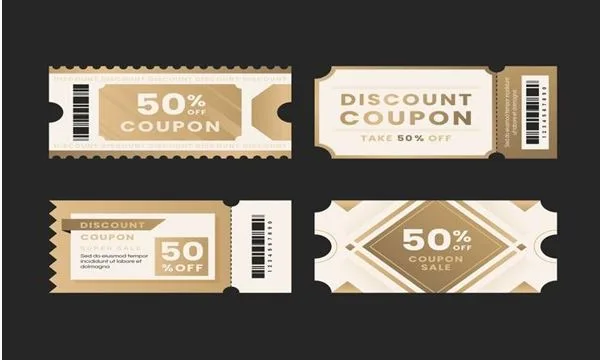The Psychology Behind Why We Gravitate Toward Premium Fashion Accessories
Why do we keep reaching for the premium bag, the limited-edition watch, or the hand-finished sunglasses when a basic version would work just fine? The psychology behind gravitating toward premium fashion accessories runs deeper than “nice to have.” It’s a mix of signaling, identity, emotional reward, and subtle biases we barely register. Research in consumer behavior backs this up, and even the APA’s accessible insights help explain why certain pieces feel like shortcuts to our best selves.
And this plays out everywhere, from the gym where a sharp, structured tee from TailoredAthlete changes how we carry ourselves, to the moments we choose a timepiece that feels like part of our personal story. Premium choices don’t just signal taste; they reinforce who we believe we are becoming. That’s exactly why classic accessories like Emporio Armani watches continue to resonate: they merge craftsmanship with identity in a way that feels intentional rather than indulgent.
Beyond Utility: What “Premium” Signals
Status, Competence, And Group Belonging
Premium accessories act like social shorthand. When we carry a heritage leather tote or wear a meticulously engineered timepiece, we’re not just covering a need: we’re signaling status (scarce resources), competence (taste and discernment), and belonging (alignment with a tribe). In everyday life, these cues reduce friction. Colleagues infer reliability from a polished belt and shoes: peers read “we share standards.” The kicker: we rarely articulate this. We feel it. The choice “fits the room.” As social animals, we lean on these quick reads because they help us navigate ambiguous settings without saying a word.
Costly Signals And Perceived Authenticity
Costliness, time, money, craftsmanship, functions as a hard-to-fake signal. We judge a handstitched wallet or a Swiss movement as more “real” precisely because it’s expensive to produce and buy. That’s classic costly signaling: the higher the sacrifice, the stronger the perceived authenticity. We also map authenticity to story, origin, atelier, materials. When the narrative aligns with visible quality (grain, hardware, weight), we grant the piece a moral halo. “It’s the real thing” becomes a feeling of trust, which in turn justifies the premium.
Identity, Self-Expression, And The Extended Self
Narrative Identity And Life Transitions
Accessories help us write and edit who we are. At milestones, first job, new city, post-breakup reset, we use tangible markers to anchor a fresh chapter. A structured bag says “I’m intentional now.” A minimalist cuff says “no noise, just focus.” Psychologists call this narrative identity: we make meaning through the stories we tell about ourselves. Premium items serve as props that make the story stick. Because they endure longer, they stabilize the new self across months of wobbly change. Every morning, we clasp the watch and re-enter the role.
Gender, Culture, And Personal Archetypes
What reads as “premium” isn’t universal. Culture shapes our cues. In some contexts, loud logos confer prestige: in others, stealth wealth, subtle stitching, no monogram, signals insider fluency. Gender norms tilt the palette too: men may lean on technical specs (movement, alloy), while women might prioritize versatility or heritage, though the lines are blurring fast. Underneath are archetypes we gravitate toward: the Explorer (patinated leather), the Minimalist (clean lines, perfect proportion), the Power Broker (glint, precision). Premium pieces let us channel the archetype without saying a word.
Sensory Rewards And Craftsmanship
Tactile Pleasure And Material Cues
Our hands are honest. They can tell full-grain from bonded leather, solid brass from plated zinc. Weight, temperature, and texture deliver micro-rewards with every touch. Think of the satisfying click of a milled clasp or the velvet-dry feel of a high-quality acetate frame. These sensory cues matter because they compress complex quality judgments into a split-second “feels right.” Over time, the tactile pleasure becomes habit-forming: we reach for the object because it’s calming, like the weight of a favorite pen.
Aesthetics, Fluency, And “Rightness”
Design fluency, the ease with which we process a form, drives our sense of beauty. Premium accessories often hit harmonious ratios, balanced negative space, and coherent detailing. Our brains reward this fluency with a small burst of pleasure that reads as “rightness.” When proportions are off, crooked stitch density, misaligned hardware, we feel it before we rationalize it. The result: we’re willing to pay for that effortless harmony, even if we can’t diagram the geometry on a napkin.
Scarcity, Social Proof, And The Allure Of The Unobtainable
Limited Editions And Anticipation Loops
Scarcity pours jet fuel on desire. Limited runs, waitlists, and drops create anticipation loops: tease, queue, release, post-purchase sharing. The wait becomes part of the value. We invest attention upfront, tracking calendars, following insider accounts, which makes the eventual acquisition feel earned. That investment rewires the experience: we don’t just buy an object, we complete a quest. And the rarer the item, the stronger the story we get to tell.
Influencers, Parasocial Ties, And Norm Cascades
When someone we trust, often an influencer we’ve formed a parasocial bond with, normalizes a piece, we update our sense of what’s “in bounds.” One unboxing won’t do it, but repeated sightings across credible feeds create a norm cascade. We’re not mindless: we’re economizing. We outsource some due diligence to people whose taste we’ve vetted. Social proof isn’t just pressure: it’s a heuristic for limited attention. Premium accessories benefit because their signals are legible on camera: sheen, structure, the snap of quality.
Behavioral Biases At The Point Of Purchase
Anchoring, Price–Quality Heuristics, And Sunk Cost
We don’t evaluate prices in a vacuum. A $1,200 bag feels “reasonable” after seeing a $3,000 one, that’s anchoring. We also lean on the price–quality heuristic: higher prices imply better materials or service. Not always true, but potent. Once we’ve researched for hours or visited boutiques, sunk cost kicks in: we’re motivated to complete the journey to justify the time already spent. Smart retailers know this and design choice architecture, hero items, decoys, and tiered lines, to steer us.
Self-Licensing, Guilt Mitigation, And “Treat” Logic
We negotiate with ourselves. “I hit my savings goal, I can treat myself.” That’s self-licensing. We soften guilt by reframing the purchase as an investment (“cost per wear”), or by pairing it with a pro-social act (donating an old bag). Small rituals, sleeping on it, screenshotting, asking a friend, reduce post-purchase dissonance. When the math of joy per use is clear, the treat logic holds, and we carry the piece without the mental static of regret.
Emotional Durability And Attachment Over Time
Care Rituals, Patina, And Memory Encoding
We bond through care. Conditioning leather, brushing suede, winding a mechanical watch, these acts create micro-commitments that deepen attachment. Patina is the receipt of a life lived: softened edges, subtle darkening on handles, a nick from a trip we remember vividly. Each mark encodes memory, turning an accessory into a personal archive. Emotional durability emerges when an item accrues stories faster than alternatives can compete.
Heirlooms, Legacy, And Intergenerational Meaning
Premium accessories can outlast us. When we inherit a grandmother’s brooch or a father’s watch, we inherit identity threads, values, tastes, even resilience. Heirlooms flatten time: we wear them into new rooms while carrying old rooms with us. This intergenerational meaning is its own premium. We’re not just paying for materials: we’re paying for the option to pass a chapter forward. That prospect subtly shifts how we choose, pushing us toward timeless proportions and serviceable construction.






